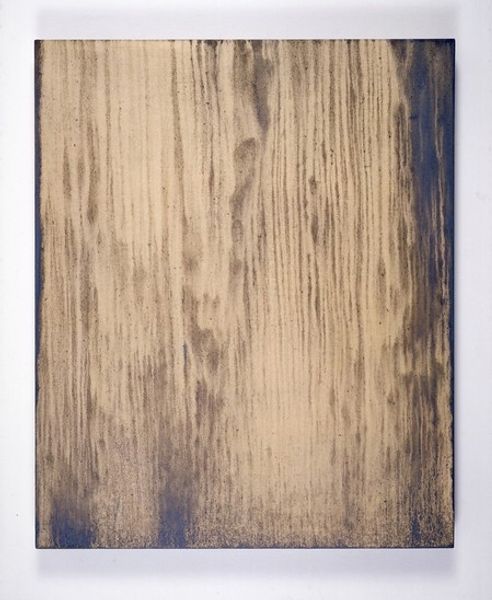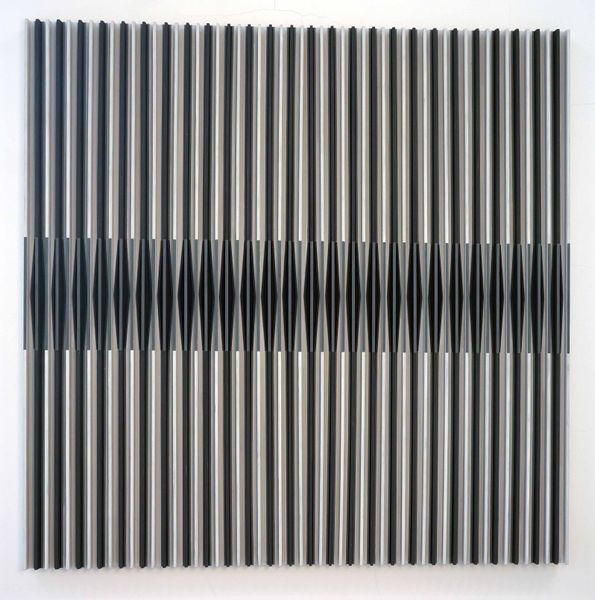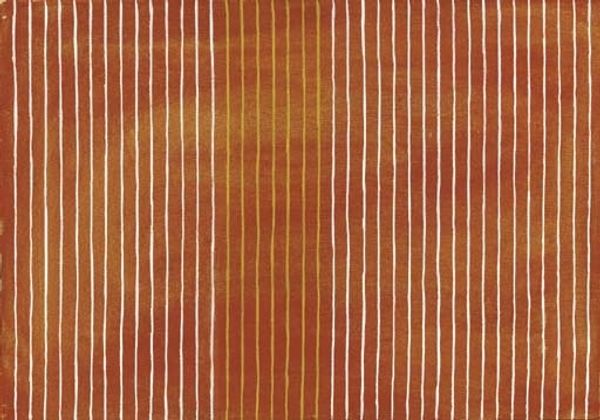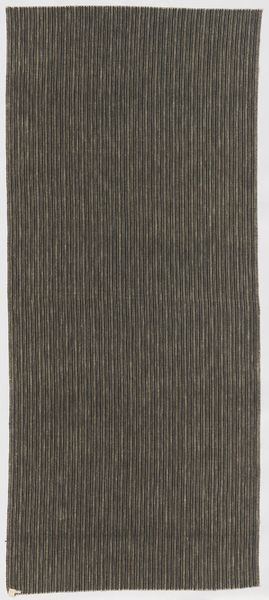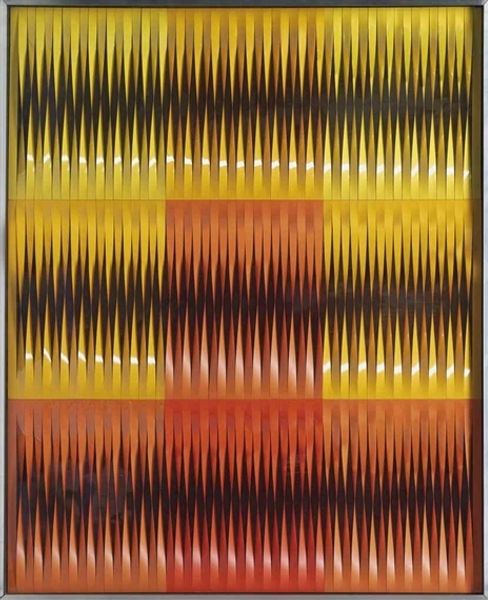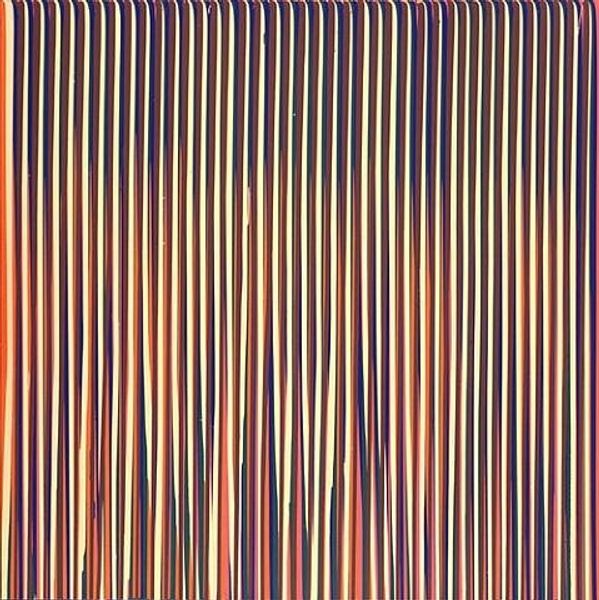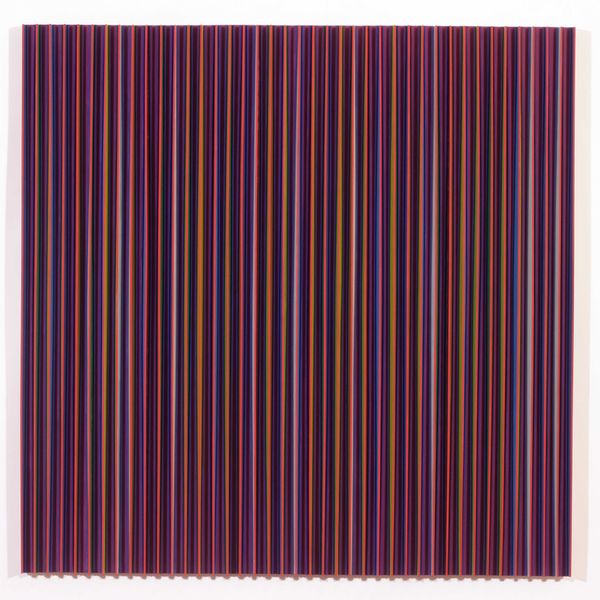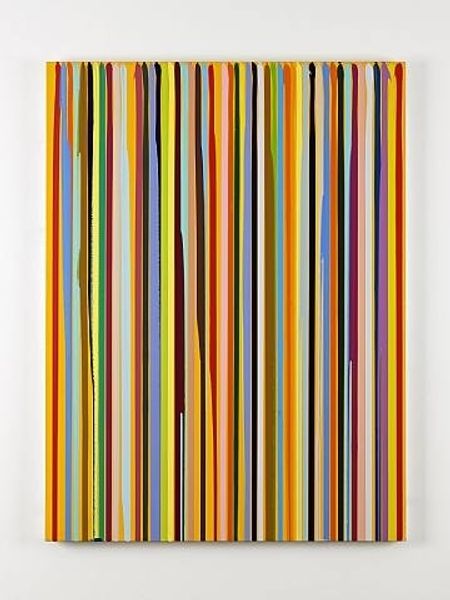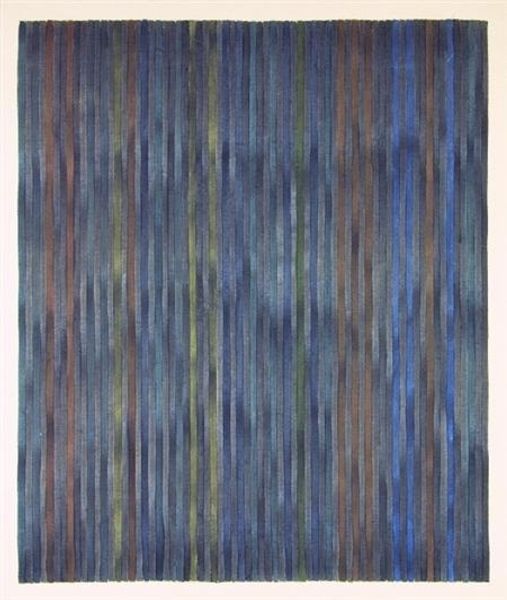
painting
#
abstract expressionism
#
abstract painting
#
painting
#
geometric pattern
#
abstract pattern
#
abstraction
#
abstract art
#
modernism
Copyright: Callum Innes,Fair Use
Curator: Alright, let's dive into Callum Innes's "Formed Painting No. 2" from 1991, created with mixed media. What’s your immediate reaction to this work? Editor: It’s so grounding! Like standing in a silent, brown forest after a very light rain. So minimal and repetitive it’s almost meditative, like looking into a void. Curator: I agree, there's a definite tranquility here, though perhaps born from a rigorous artistic process. It aligns with Innes's broader exploration of dissolving and revealing the layers of paint itself. It feels related to process-based abstraction where the making of the piece is foregrounded as much as its final image. Editor: Yes! I feel like I can practically *hear* the act of removing the paint. Did he embrace accidental moments, or was he quite controlled in his approach? Curator: He is really controlled but the work still reflects the artist's focus on gesture. Innes methodically applies and then removes paint with solvent. He builds layers, then almost sculpts emptiness out of them. This connects him to a dialogue within modernism—specifically how a painting can be less about adding and more about strategic subtraction. It breaks down notions of artistic ego, and what art history deems 'mastery'. Editor: I love that. There's an element of chance involved in removing the layers, a kind of collaboration with the materials themselves. Thinking of the historical reception, did audiences embrace this rather...dematerialized form of painting? Curator: Responses varied. For some, it was a refreshing departure from bombastic expressionism. Others dismissed it as lacking substance or being overly cerebral. Yet Innes created works questioning painting's very purpose in the face of modern technological advancements. A large part of modernism always seemed obsessed with asking what constitutes 'painting' even? Editor: Right, pushing boundaries. Looking closely, each of those near-vertical lines carries slight variations in tone and texture. It encourages you to slow down. This painting gently challenges us to question the stories of perfection. Curator: Beautifully put. This "Formed Painting" is not just a visual experience; it is, indeed, an invitation to think deeply about the nature of creation and viewership. Thank you for giving this moment its importance! Editor: Thanks, I see it quite differently than when we started. I love how his work invites contemplation on not just what is there, but the potent silence of what's been taken away.
Comments
No comments
Be the first to comment and join the conversation on the ultimate creative platform.
